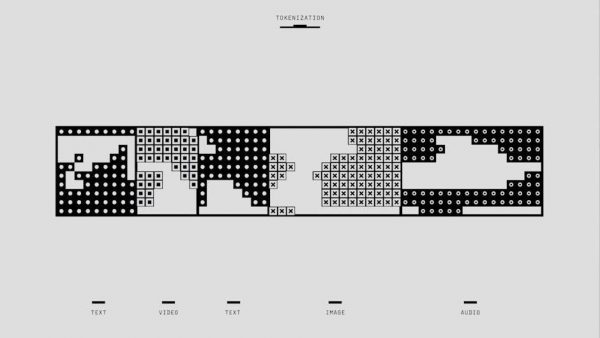The pedagogy of catechesis is rooted in God’s divine teaching methods‚ emphasizing a personal encounter with Christ․ It focuses on the individual’s spiritual journey‚ using dynamic methods to transmit faith effectively․
1․1․ Definition and Scope
The pedagogy of catechesis is a divine teaching method that guides individuals toward a deeper relationship with Christ․ It is rooted in God’s own pedagogy‚ as revealed through Scripture and the Church’s tradition․ Catechesis is not merely intellectual instruction but a spiritual journey that fosters conversion and discipleship․ Its scope extends beyond doctrine‚ encompassing the holistic formation of the person—intellectually‚ morally‚ and spiritually․ This pedagogy emphasizes the importance of community‚ experience‚ and prayer in transmitting the faith․ It is adaptable to different ages and contexts‚ ensuring that the Gospel message is lived and shared authentically․ By following God’s pedagogy‚ catechesis becomes a dynamic and transformative process that prepares individuals for a life of faith‚ love‚ and service․

1․2․ Historical Development
The pedagogy of catechesis has evolved significantly over centuries‚ shaped by the Church’s mission to transmit the Gospel effectively․ Rooted in Scripture and early Christian practices‚ catechesis initially focused on preparing converts for baptism through systematic instruction․ The early Church Fathers emphasized the importance of adapting teaching methods to the needs of learners․ During the Middle Ages‚ catechesis incorporated art‚ drama‚ and liturgy to engage the faithful․ The Council of Trent renewed emphasis on doctrinal clarity‚ leading to the development of catechisms․ The 20th century‚ particularly Vatican II‚ brought a renewed focus on the pedagogy of God‚ emphasizing a more dynamic and personal approach․ This historical journey reflects the Church’s commitment to adapting catechetical methods while remaining faithful to its divine origins and purpose․

Methodologies in Catechesis
Effective communication‚ language adaptation‚ and memorization techniques are central to catechetical methodologies․ These approaches ensure faith transmission is engaging‚ contextually relevant‚ and spiritually transformative across diverse audiences and ages․
2․1․ Communication and Catechesis
Communication is the cornerstone of effective catechesis‚ ensuring the transmission of faith is clear‚ engaging‚ and transformative․ It involves not only verbal expression but also actions‚ gestures‚ and presence․ Catechetical communication must adapt to diverse contexts‚ ages‚ and cultures‚ using methods that resonate with contemporary audiences․ By employing relatable language and dynamic interactions‚ catechists foster active participation and deeper understanding․ Modern tools‚ such as multimedia and digital platforms‚ enhance this process‚ making it more accessible and relevant․ Ultimately‚ communication in catechesis is not merely informational but relational‚ aiming to nurture a personal encounter with Christ and a lived faith․ This approach ensures the message of God’s love is conveyed with clarity and compassion‚ addressing the needs of all individuals․
2․2․ The Role of Language in Transmitting Faith
Language plays a vital role in transmitting faith‚ serving as the primary medium for conveying spiritual truths and values․ Effective catechesis requires clear‚ simple‚ and relatable language that resonates with diverse audiences‚ including children‚ youth‚ and adults․ The use of sacred Scripture and traditional expressions enriches the transmission of faith‚ while modern terminology ensures relevance in contemporary contexts․ Language must also adapt to cultural and generational differences‚ ensuring accessibility and inclusivity․ The balance between doctrinal accuracy and pastoral sensitivity is essential‚ as language should inspire and nurture a personal relationship with God․ Additionally‚ non-verbal communication‚ such as symbols and gestures‚ complements verbal language in deepening faith understanding․ Ultimately‚ the power of language lies in its ability to awaken hearts and minds to the mystery of God’s love‚ fostering a lived and transformative faith experience․
2․3․ Memorization Techniques
Memorization is a cornerstone in catechesis‚ enabling believers to internalize key teachings‚ prayers‚ and doctrines․ Techniques such as repetition‚ association with rituals‚ and integration into daily life reinforce memory․ Music‚ art‚ and storytelling are effective tools for making memorization engaging and meaningful․ For children‚ visual aids and interactive activities enhance retention‚ while for adults‚ reflective meditation and group recitation foster deeper understanding․ Memorization not only aids in recalling sacred texts but also strengthens faith by embedding spiritual truths in the heart․ It serves as a foundation for prayer‚ reflection‚ and living out one’s faith authentically․ By incorporating these methods‚ catechesis ensures that the Word of God remains accessible and transformative across all ages and contexts‚ nurturing a lifelong commitment to spiritual growth and discipleship․
Planning and Programming in Catechesis
Effective planning involves tailoring methods to different ages and contexts‚ ensuring a balance between doctrine and life experiences․ It integrates intellectual and dynamic approaches to foster spiritual growth and engagement․
3․1․ The Pedagogy of God
The pedagogy of God is rooted in divine teaching methods‚ emphasizing a relational and incarnational approach․ It reflects how God accompanies humanity through history‚ revealing Himself in love and dialogue․ This pedagogy is not merely doctrinal but transformative‚ focusing on the person’s encounter with Christ․ It highlights the importance of accompaniment‚ similar to how Jesus walked with His disciples‚ teaching through actions and words․ The Church continues this method‚ ensuring catechesis is a lived experience․ Catechists are called to imitate God’s pedagogy by creating a nurturing environment where faith is shared and lived․ This approach prioritizes the individual’s spiritual journey‚ making faith a dynamic and personal reality․ By aligning with God’s pedagogy‚ catechesis becomes a path to deeper communion with Him and His Church․
3․2․ Practical Applications
Practical applications of catechetical pedagogy involve dynamic and relational methods to engage individuals in faith formation․ This includes interactive activities‚ community participation‚ and adapting teaching to different ages․ Catechists use age-specific approaches‚ such as storytelling for children and reflective discussions for adults․ Technology and multimedia are also integrated to cater to modern learning preferences․ The focus is on creating a supportive environment where participants can share experiences and grow spiritually․ Practical methods emphasize active participation‚ ensuring catechesis is not just intellectual but also transformative․ By incorporating diverse strategies‚ catechesis becomes a lived experience‚ fostering a deeper connection to faith and community․ These applications ensure the pedagogy remains relevant and effective in guiding individuals toward a vibrant Christian life․

The Importance of the Subject in Catechesis
The subject in catechesis is central‚ focusing on the individual’s spiritual journey․ It emphasizes the person over doctrine‚ avoiding rigid academic models to ensure faith doctrines serve the person’s growth․
4․1․ Focus on the Person
The pedagogy of catechesis emphasizes the centrality of the person‚ prioritizing their spiritual journey over rigid doctrinal frameworks․ This approach ensures that faith formation is tailored to the individual’s needs‚ fostering a deeper connection to Christ․ By focusing on the person‚ catechesis becomes a dynamic and relational process‚ avoiding the reproduction of academic models․ It highlights the importance of active participation‚ where the catechized are not mere recipients but active agents in their faith development․ This methodology respects the unique experiences and contexts of each individual‚ ensuring that the transmission of faith is both personal and transformative․ The person-centered approach also encourages a holistic formation‚ integrating intellectual‚ emotional‚ and communal dimensions to nurture a vibrant and lived faith․

4․2․ Tailoring Methods to Different Ages and Contexts
Effective catechesis requires adapting methods to suit various ages and contexts‚ ensuring the message resonates deeply with diverse groups; For children‚ interactive and visual approaches are essential‚ while adolescents benefit from reflective discussions․ Adults may require more in-depth doctrinal content․ Cultural and social environments also influence methodology‚ as what works in one setting may not in another․ This adaptability ensures catechesis remains relevant and impactful‚ fostering a genuine encounter with faith in every scenario․

Recent Developments and Future Trends in Catechetical Pedagogy
Recent advancements in catechetical pedagogy emphasize the integration of technology and multimedia resources to engage diverse learners․ Online platforms and interactive materials are increasingly used to adapt catechesis to modern lifestyles․ There is also a growing focus on experiential learning‚ encouraging active participation and community involvement․ Future trends highlight the importance of personalized faith formation‚ tailoring methods to individual needs and cultural contexts․ The use of virtual reality and AI-driven tools is being explored to enhance immersive catechetical experiences․ Additionally‚ there is a renewed emphasis on ecumenical collaboration and interfaith dialogue to foster unity and understanding․ These innovations aim to make catechesis more accessible‚ dynamic‚ and relevant in a rapidly changing world‚ while remaining rooted in the core principles of faith transmission․




